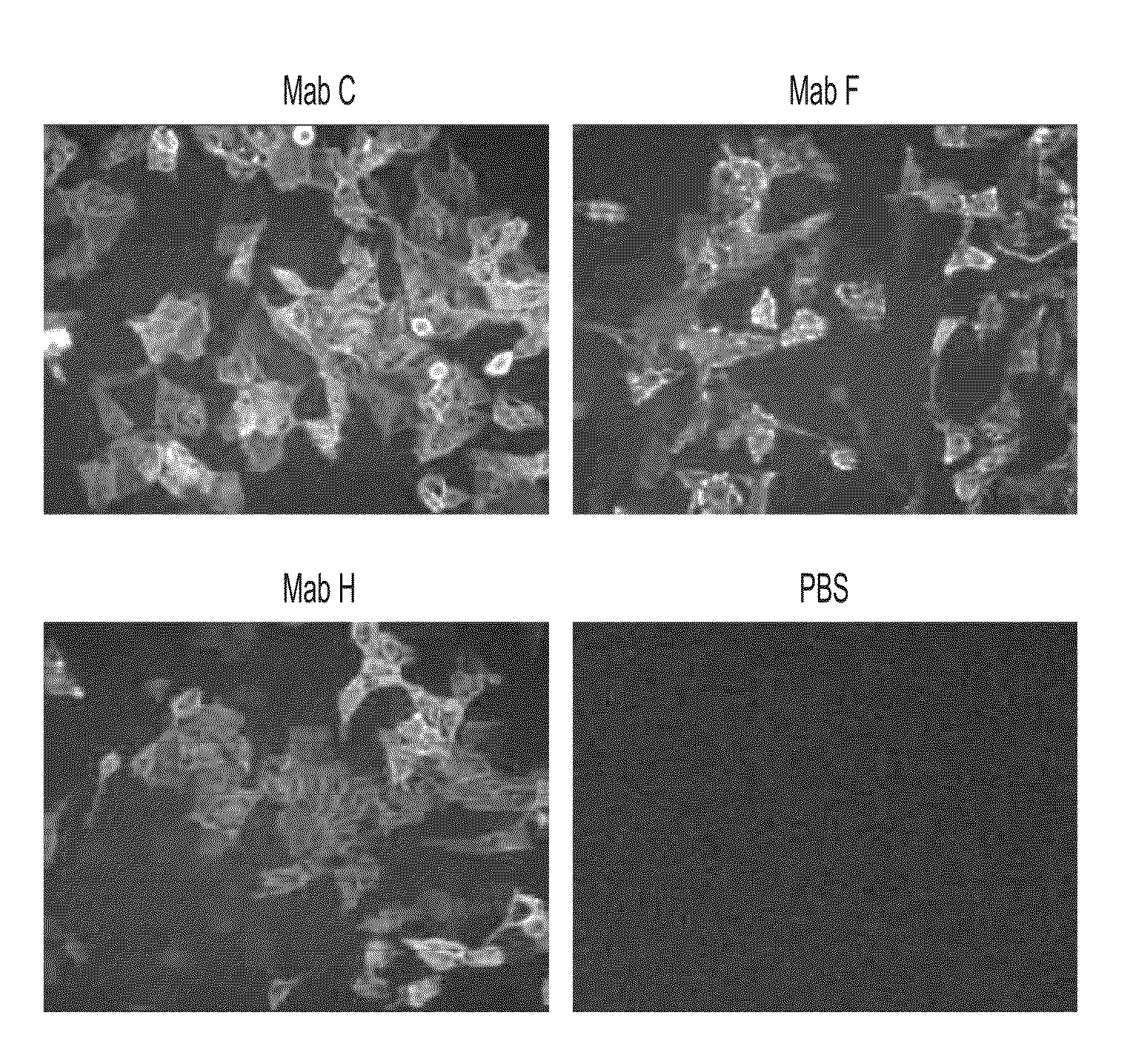Monoclonal antibodies targeting neutralizing epitopes on H5 influenza virus of clade 2.3
a technology of monoclonal antibodies and h5 influenza virus, which is applied in the field of murine monoclonal antibodies, can solve the problems that the strategy requiring endogenous synthesis of antibodies cannot provide immediate protection against h5n1 infections, and increase the likelihood of unwanted side effects, so as to inhibit the infection of a subject, and reduce the risk of influenza h5n1 virus infection
- Summary
- Abstract
- Description
- Claims
- Application Information
AI Technical Summary
Benefits of technology
Problems solved by technology
Method used
Image
Examples
example 1
Materials and Methods
[0072]Viruses and Cells:
[0073]The H5N1 viruses used in this studies are from different clades as shown in Table 1 below. Except the Indonesia strains, the remaining H5 influenza viruses were generated with reverse genetics in our lab as described previously (Ho et al., 2009). Viruses were inoculated into the allantoic cavities of 11-day-old embryonated chicken eggs and harvested following 48 h of incubation at 37° C. Virus titers were determined using hemagglutination assays according to standard methods (Abdel-Ghafar et al., 2008). H5N1 subtype viruses were inactivated with formaldehyde as described previously (He et al., 2007). All experiments with live H5N1 subtype viruses were performed in a biosafety level 3 containment laboratory in compliance with CDC / NIH and WHO recommendations and also were approved by the Agri-Food and Veterinary Authority and the Ministry of Health of Singapore.
[0074]MDCK cells were obtained from the American Type Culture Collection (...
example 2
Characterization of Murine Monoclonal Antibody C, F and H
[0085]Mab C, F and H were produced from mice immunized with A / Anhui / 1 / 05 H5N1 virus. Mab C and H were identified to belong to isotype IgG2a, while Mab F belongs to IgG3. All three of these Mabs present neutralizing activity against H5N1 strain A / Anhui / 1 / 05 H5N1 (Anhui), besides positive activity in IFA with Anhui infected MDCK cells (FIG. 1), indicating that they all recognize neutralizing epitopes in H5.
example 3
Complementary Neutralization with Mab 2D9 by Either Mab C, F or H
[0086]H1 and microneutralization tests were performed with Mab C, F and H against a range of H5N1 viruses from different major clades. As shown in Tables 1 and 2, Mab C, F and H can efficiently neutralize H5N1 viruses of clade 2.3. Besides, these three Mabs are able to react with some of H5N1 viruses of clade 2.2. Mab C can neutralize more viruses from clade 2.2 used in this study than Mab F and H. None of them can react with viruses from clade 0 and 1.0. As shown previously, Mab 2D9 can neutralize different H5N1 viruses from different clades but can not inhibit viruses of clade 2.3 efficiently. The Mab mix with Mab 2D9 and Mab C was shown to be able to neutralize all the viruses from all major clades used in this study. The neutralization efficacy of 2D9+C was found to be better than Mab 2D9 with Mab 4C2.
[0087]
TABLE 1Hemagglutination Inhibition Titer of Mabsa,bVirusesClade2D9CFHA / Hongkong / 156 / 970256A / HongKong / 213 / 0312...
PUM
| Property | Measurement | Unit |
|---|---|---|
| weight | aaaaa | aaaaa |
| weight | aaaaa | aaaaa |
| volume | aaaaa | aaaaa |
Abstract
Description
Claims
Application Information
 Login to View More
Login to View More - R&D
- Intellectual Property
- Life Sciences
- Materials
- Tech Scout
- Unparalleled Data Quality
- Higher Quality Content
- 60% Fewer Hallucinations
Browse by: Latest US Patents, China's latest patents, Technical Efficacy Thesaurus, Application Domain, Technology Topic, Popular Technical Reports.
© 2025 PatSnap. All rights reserved.Legal|Privacy policy|Modern Slavery Act Transparency Statement|Sitemap|About US| Contact US: help@patsnap.com

